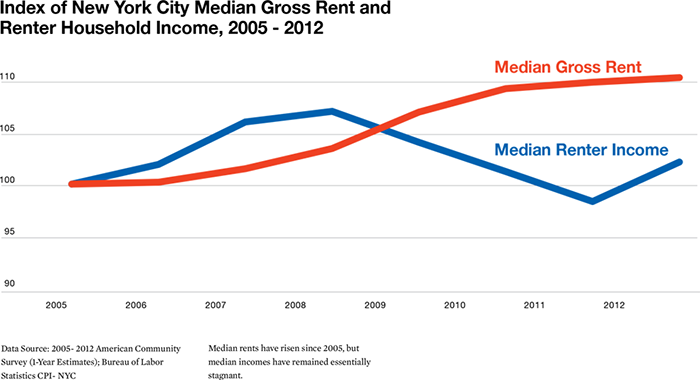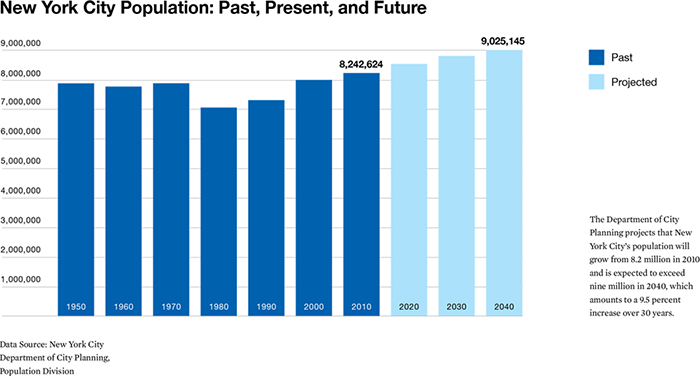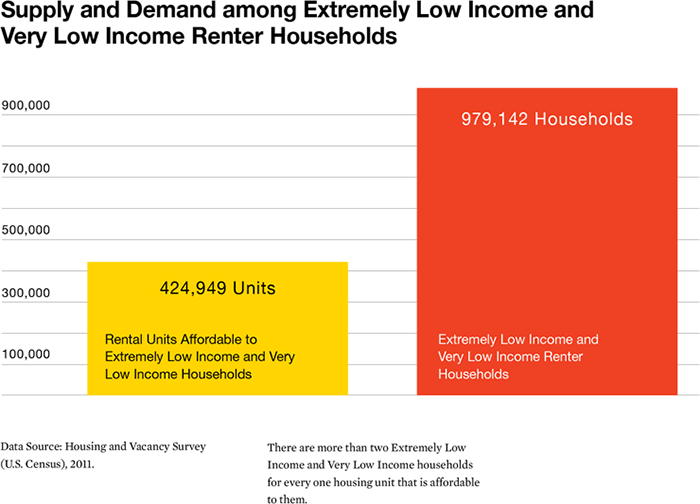
 Housing Plan311
Housing Plan311 Search all NYC.gov websites
Search all NYC.gov websites
Our current affordable housing crisis
Housing costs are rising much faster than incomes
Between 2005 and 2012 (the most recent year for which consistent data is available), the median monthly rent across the City increased by about 11 percent, after adjusting for inflation. Over the same time, the real income of the City's renters has stagnated, rising from $40,000 in 2005 to just $41,000 in 2012 (both figures are adjusted to 2013 dollars). When rents go up, but incomes remain stagnant or decrease, housing becomes less affordable.
Even those numbers fail to capture the extent of the problem, however, because households looking to move to a new apartment generally face higher rents than existing residents. Renters who had lived in their units for five years or less (recent movers) typically paid about $230 more per month than all renters typically paid in 2012. Thus, newcomers to the City or households who need to move because of rising rents or a change in household status may face an especially daunting housing market. And of course, median rents vary from neighborhood to neighborhood.

As a result, most New Yorkers now have limited options for housing and have to spend an unacceptably high share of their income just to put a roof over their heads, which means having too little left over for other basic needs. High rent-burden affects nearly every income group in every neighborhood across the five boroughs.

Another cause of the affordable housing crisis is the mismatch between demand for, and the supply of, housing.

This stems, in part, from the increasing desirability of calling New York home. For the first time in decades, more people are moving to or staying in the City than leaving: our older residents are aging in place rather than moving after retirement; our young families are remaining in the City rather than moving to the suburbs when their children reach school age; empty-nesters are returning to the City after their children are grown, and people are moving to the City from all over the United States, as well as all over the world. The attractiveness of the City is a hard-fought victory, and we must continue to retain and attract residents in order to prosper.
The private marketplace, however, has not produced enough housing for existing residents, let alone enough to accommodate the growth that the City has experienced. And, despite considerable public investment to stimulate the production of housing that is affordable to low- and moderate-income New Yorkers, the supply of publicly subsidized housing meets the needs of only a fraction of the people in those income groups.
The continued mismatch between the demand for affordable housing and its supply also exacerbates the rising income inequality that threatens the City's progress. When more than 50,000 New Yorkers sleep in homeless shelters and hundreds of thousands more struggle to pay high rents with meager earnings, the City fails to live up to its promise of opportunity.

